The Panasonic S1 II Is Secretly a Groundbreaking Full-Frame Camera
![]()
The Panasonic Lumix S1 II is the first full-frame hybrid camera to employ Dual Gain Output (DGO), significantly improving its dynamic range performance in certain photographic situations. But for some reason, Panasonic didn’t tell anyone about this when it launched the camera.
Introducing the Players: Nikon Z6 III and Panasonic S1 II
The S1 II is also a fascinating camera because it uses the same partially stacked image sensor as the Nikon Z6 III announced last year. This excellent camera has been criticized for its lackluster dynamic range performance.
The Z6 III and S1 II’s 24-megapixel image sensor aims to combine the speed of a fully stacked sensor with the affordability of a more traditional backside-illuminated non-stacked sensor, like the one in the Z6 II. To that end, the Z6 III can shoot full-resolution images at up to 20 frames per second using its electronic shutter and delivers excellent video performance.
Despite some minor issues, including its relatively ho-hum dynamic range performance, the Nikon Z6 III is an excellent camera, and one of the best options for enthusiasts in Nikon’s Z mount system.
The Panasonic Lumix S1 II arrived this May and quickly became one of the most compelling full-frame interchangeable lens cameras for hybrid users.
The S1 II uses the same 24-megapixel partially stacked sensor as the Z6 III, which enables fast continuous still shooting and very impressive video features. Both cameras are super fast and highly capable for photo and video applications.
However, the S1 II does not demonstrate the Z6 III’s middling dynamic range performance. In fact, the S1 II’s dynamic range is among the very best of any full-frame mirrorless camera. What’s going on here?
Dynamic Range Difference: Why Does the S1 II Run While the Z6 III Walks?
Why the S1 II’s dynamic range performance is relatively far superior to the Z6 III’s — 11.75 PDR versus 10.44 in William Claff’s testing at Photons to Photos — is quite the puzzle.
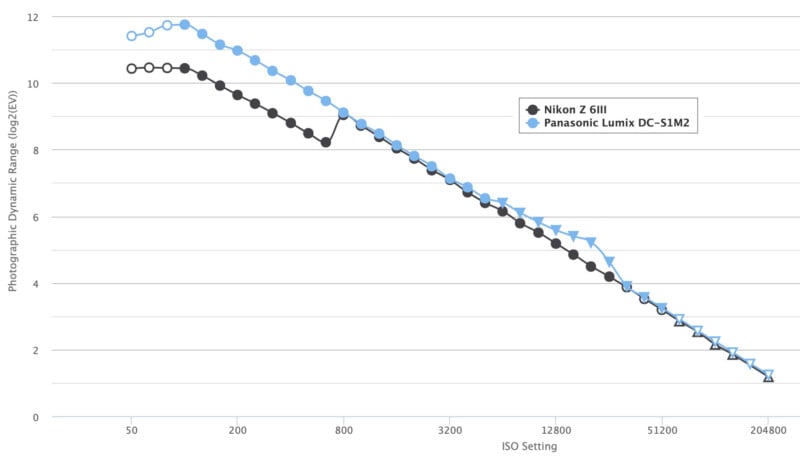
Fortunately, expert Adam Horshack, who goes by just Horshack on DPReview‘s forums and runs the YouTube channel testcams, got his hands on a Panasonic S1 II and quickly got to work trying to unravel the mystery.
Since the S1 II launched, Horshack has performed a series of “tests, experiments, and measurements” to see what about the S1 II is different compared to the Z6 III, and how Panasonic took the same sensor to greater dynamic range heights.
As a brief aside, while more dynamic range is beneficial, it’s only one aspect of overall image quality. Furthermore, both the Nikon Z6 III and Panasonic S1 II are exceptional cameras in terms of image quality, autofocus, performance, and video capabilities.
Nonetheless, one of them is still significantly better in terms of dynamic range at all ISO settings below 800: the S1 II.
Before starting his testing, Horshack theorized that the S1 II’s excellent performance was due to noise filtering and reduction in the RAW image files. This is an entirely plausible explanation for relatively superior dynamic range performance, and a method that Canon routinely employs, which is part of why its Canon EOS R3 delivers its leading dynamic range.
When DPReview published its S1 II studio samples, and shared some of their files directly with Horshack, Mitchell Clark wrote for DPR:
“The S1 II provides a good amount of dynamic range, giving you room to pull your shadows up without the detail being overwhelmed by noise. However, given the lack of chroma noise visible in our tests, it seems like there may be some noise reduction going on, either in ACR or in-camera. Either way, there’s plenty to be squeezed out of the files, with no nasty surprises, though you will see the effects of a little extra read noise if you’re shooting at base ISO to maximize dynamic range.”
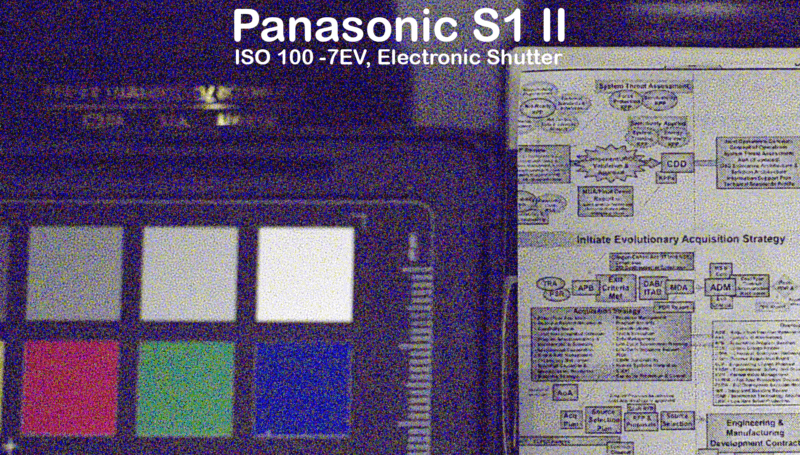
Once Horshack began testing the S1 II for himself, he found that the S1 II’s dynamic range “was so good that it seemed better than even [noise reduction] could produce.”
“I was intrigued, so a few weeks ago I acquired an S1 II and started my own deep technical analysis,” Horshack continued. “That analysis revealed evidence Panasonic was actually employing a dual gain output to achieve the S1 II’s excellent [dynamic range].”
Dual Gain Output, or DGO, is when a camera captures two readouts of a single exposure at two different ISO settings. In the case of the Lumix S1 II, it captures one at ISO 100 and a second at ISO 800, and then merges the two results in the final RAW image file.
“This combines the low ISO saturation capacity of ISO 100 with the deep shadow noise improvement seen at the dual gain step of ISO 800,” Horshack explains.
The S1 II uses this clever methodology to achieve superior dynamic range performance when using EFCS or a fully mechanical shutter, but does not employ DGO for its fully electronic shutter.
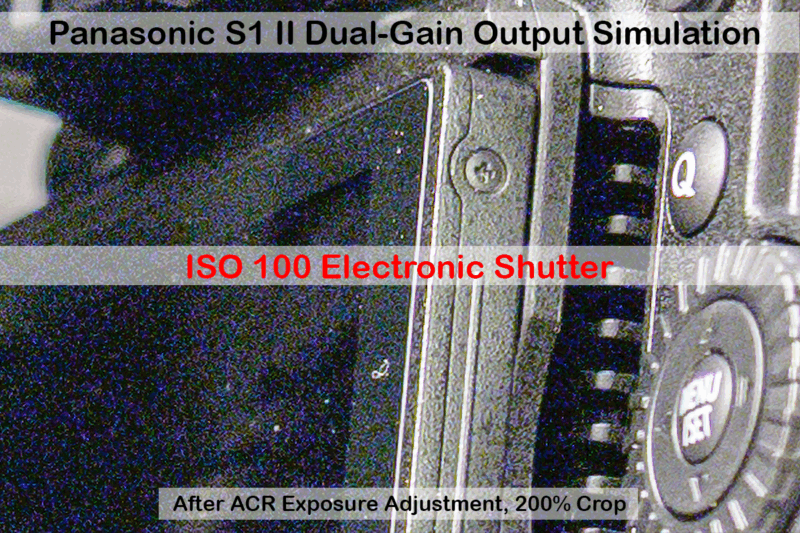
Why Dual Gain Output Matters
This is a fascinating finding for a couple of reasons. One, it explains why the S1 II’s dynamic range performance is so darn good, of course. But it also means that the Z6 III’s partially stacked image sensor is, in fact, capable of dual gain output, even if implementation may be impossible. More on that later.
Just over two years ago, Horshack theorized about what would happen to the Z8/Z9’s dynamic range performance if that fully stacked sensor employed DGO.
“What if the Z8/Z9 sensor had a dual ISO readout feature, where it could combine the higher DR of ISO 64 with the better shadow performance of ISO 500, which would extend the Z8/Z9 ISO 64’s DR by an additional two tops, approximately 14.3EV of engineering dynamic range?” Horshack asked in 2023.
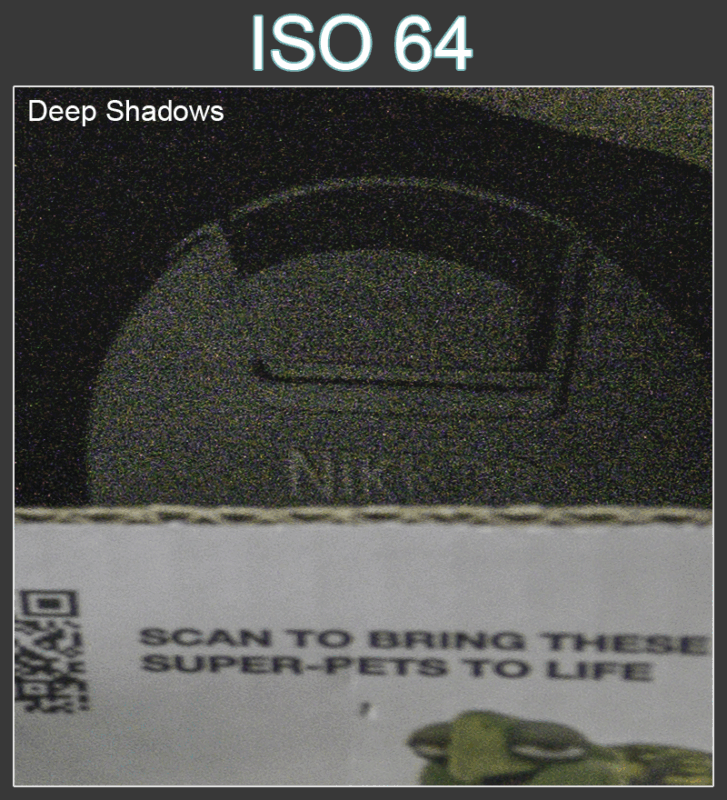
So he ran some tests, and sure enough, as expected, dynamic range performance at ISO 64 would be significantly better.
This 2023 test is instructive in the case of the S1 II because, when Horshack employed that same simulation methodology to the S1 II’s electronic shutter, combining images captured at ISO 100 and 800, the simulated electronic shutter results looked identical to the real mechanical shutter results. This is further evidence that the S1 II is, in fact, utilizing DGO with EFSC and MS modes.
For those who want to get really into the weeds on the evidence for the S1 II’s utilization of DGO, Horshack did a deep dive into an interesting scaling anomaly concerning histogram values.
All things considered, Horshack is confident that he has “definitive proof that Panasonic is employing DGO.”
What Panasonic Says
PetaPixel contacted Panasonic Lumix for comment on Horshack’s findings, and Panasonic offered the following statement:
“DRBoost is active during stills shooting in some cases. While we cannot specify the detailed conditions under which it works at this time, we can confirm this functionality provides the increased Image Quality performance observed while capturing stills with the LUMIX S1II.”
Why Doesn’t the Z6 III Have Dual Gain Output?
“Two years ago I simulated the potential noise improvement of Dual Gain Output applied to a full-frame sensor and hoped we would see it one day in a camera. That day has arrived,” Horshack writes. “Hopefully Nikon will implement DGO in the next versions of their cameras.”
That immediately raises the question, “Why doesn’t the Nikon Z6 III have DGO?”
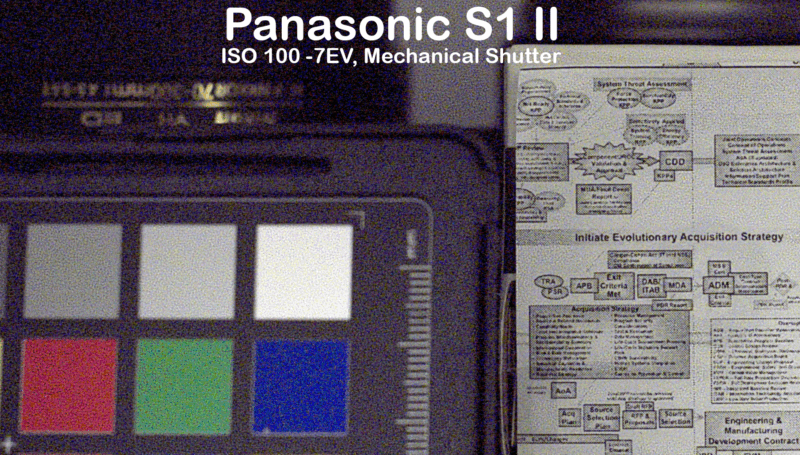
“How much work is required for a camera to implement DGO depends entirely on the particular sensor implementation. In reading through data sheets and patents, some sensor HDR/DGO implementations use a unique pixel output scheme, either interleaving the dual gain pixel data coming off of the sensor or outputting two separate, self-contained frames — in those scenarios, the camera’s ISP (Image Signal Processor) would need specific support to handle those schemes, including combining the two gain pixel outputs/frames into a single RAW,” Horshack tells PetaPixel.
“If that’s the case for the partially-stacked sensor in the S1 II / Z6 III, then my guess is Nikon’s ISP (EXPEED 7) doesn’t have this support designed into it and thus can’t be added to the Z6 III with a firmware update,” Horshack theorizes when asked if the Z6 III’s lack of DGO could be addressed on the software side.
However, Horshack adds that if the sensor instead achieves DGO by merging, or combining, the dual gain data itself, then it would theoretically be possible to enable something like this via firmware, “as it would only require enabling the feature on the sensor.”
“Going forward I would expect most future cameras to implement some form of sensor-based HDR or DGO,” he continues.
However, DGO is not without potential limitations. There is the risk of “perceptual side effects in how the pixel data from the two gains are merged,” Horshack says.
“In my DGO simulation model built in Matlab code I do a simple grafting of the high-gain data over the low-gain data, replacing the lower 5EV’s (stops) of data in the ISO 100 exposure with the ISO 800 exposure. That seems to work reasonably well and seems to roughly match the output of the S1 II’s DGO output,” he tells PetaPixel. “However, such simple schemes might create SNR ‘knees’ at the boundary between the two gain areas, although I haven’t seen anything objectionable in my cursory analysis.”
There is another potential limitation. DGO increases sensor readout times, which are not an issue when using the mechanical shutter, “since the readout occurs with the shutter closed,” but can be an issue when using an electronic shutter. An increase in readout time means worse rolling shutter artifacts, which could explain why the S1 II doesn’t utilize DGO when using its electronic shutter.
“Panasonic has a history of favoring readout speed vs IQ on the electronic shutters, including the shutterless S9 where Panasonic went to a 12-bit readout,” Horshack adds.
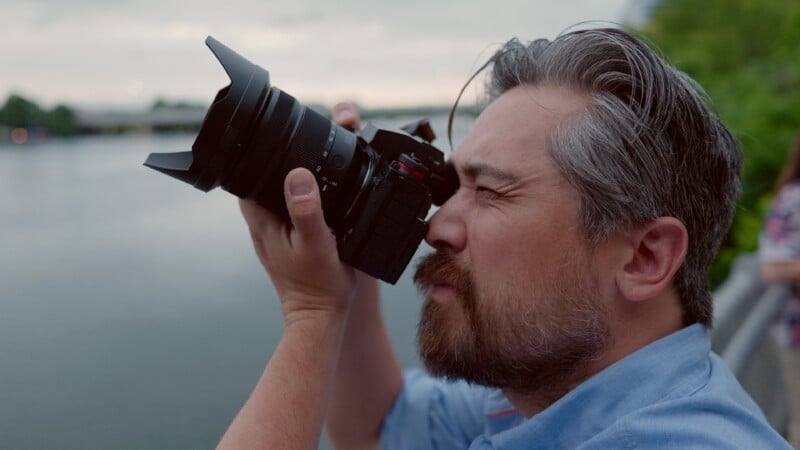
DGO Should Become Increasingly Common
Given that the processors inside cameras are becoming increasingly powerful, this not only enables features like DGO but also helps improve image sensor readout performance across the board (alongside image sensor improvements). Horshack’s expectation that cameras will increasingly employ HDR or DGO seems entirely reasonable.
There are significant image quality benefits to cameras using something like DGO, and relatively few downsides, at least in optimal conditions. Dynamic range isn’t everything, of course, but more dynamic range is better, all else equal.